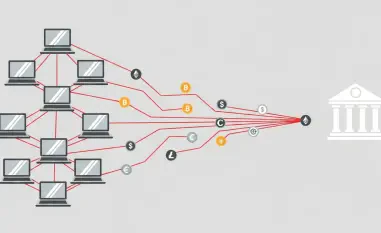Unveiling the Hidden Threat in Browser Tools
In today’s digital landscape, browser extensions have become indispensable for millions of users, streamlining tasks and boosting productivity with just a few clicks. However, a staggering statistic reveals a darker side: over 60% of enterprise data breaches in recent years have been linked to compromised browser tools, exposing sensitive information to cybercriminals. This alarming reality sets the stage for a critical examination of these seemingly benign add-ons. As businesses increasingly rely on extensions for automation and efficiency across diverse platforms, the risks posed by malicious variants demand urgent attention. This review delves into the technology behind browser extensions, dissecting their features, vulnerabilities, and the evolving threats they harbor in both traditional and AI-driven environments.
Analyzing the Core Features and Capabilities
Evolution into Powerhouse Tools
Browser extensions have transformed dramatically from basic add-ons to robust platforms integral to enterprise workflows. Designed to enhance user experience, these tools now integrate seamlessly with business applications, offering functionalities like real-time data analysis and task automation. Their ability to customize browsing experiences makes them vital for professionals across industries, tailoring interfaces and processes to specific needs with unprecedented ease.
AI Integration and Advanced Automation
A significant leap in extension technology is the incorporation of artificial intelligence, enabling sophisticated automation and decision-making support. Extensions leveraging AI can predict user needs, automate repetitive tasks, and even provide contextual insights during browsing sessions. However, this deep integration often requires extensive permissions, granting access to sensitive data and system functions, which can be exploited if not properly secured.
Permissions and Access Levels
The permissions model of browser extensions is a double-edged sword, providing necessary access for functionality while opening potential gateways for abuse. Many extensions request broad access to user data, including browsing history and personal inputs, to deliver personalized services. This extensive reach, while beneficial for performance, positions them as attractive targets for attackers seeking to harvest information or manipulate browser behavior.
Performance and Security Risks
Diverse Threat Landscape
The performance of browser extensions is often overshadowed by the array of threats they can introduce. Malicious extensions can steal data, inject harmful code, or execute unauthorized actions, often going undetected for extended periods. Techniques such as code obfuscation and delayed attack activation make it challenging for standard security measures to identify and neutralize these risks promptly.
Cross-Platform Vulnerabilities
Unlike single-platform software, browser extensions operate across a spectrum of environments, each with unique security architectures. From widely used browsers like Google Chrome to privacy-focused ones like Brave, and even AI-driven platforms, the adaptability of malicious extensions to exploit platform-specific weaknesses broadens the attack surface. This cross-platform nature complicates defense strategies, as inconsistencies in security policies hinder uniform protection.
AI-Specific Threats and Novel Attacks
AI-powered browsers and extensions introduce a new frontier of risks, such as prompt injection attacks, where malicious code manipulates AI responses to execute harmful actions. Unencrypted data transmissions in these environments further exacerbate vulnerabilities, potentially affecting entire networks due to their interconnected design. These emerging threats highlight a critical gap in current security frameworks, demanding innovative approaches to safeguard advanced systems.
Real-World Impact and Enterprise Challenges
Industry-Specific Consequences
The impact of malicious extensions reverberates across sectors, with industries like finance and healthcare facing heightened risks due to their reliance on browser-based tools for sensitive operations. A compromised extension in a financial institution could lead to unauthorized transactions, while in healthcare, it might expose patient records, underscoring the dire consequences of inadequate security measures in specialized contexts.
Detection and Mitigation Hurdles
Detecting and mitigating threats from malicious extensions remains a formidable challenge due to varying browser architectures and permission models. The lack of standardized security protocols across platforms means that a threat evading detection in one browser might thrive undetected in another. This inconsistency poses significant obstacles for IT teams tasked with securing distributed workforces using multiple browsing environments.
Regulatory and Market Constraints
Beyond technical barriers, market dynamics and regulatory delays compound the issue of extension security. The slow pace of policy updates often lags behind the rapid evolution of cyber threats, leaving gaps in enforcement. Additionally, the difficulty of imposing uniform standards across a global, decentralized user base further hinders efforts to create a cohesive defense against malicious extensions.
Reflecting on the State of Extension Security
Looking back, this exploration of browser extensions revealed a technology brimming with potential yet fraught with significant security pitfalls. The review uncovered how their evolution into essential enterprise tools, amplified by AI capabilities, coincided with a surge in sophisticated cyber threats exploiting cross-platform vulnerabilities. It became evident that current defenses, often tailored to specific browsers, fall short against the adaptable nature of modern attacks. Moving forward, organizations must prioritize the adoption of Secure Enterprise Browser platforms to ensure comprehensive, platform-agnostic protection. Investing in continuous user education to recognize and report suspicious extension behavior is equally vital. As the digital realm continues to evolve, exploring collaborative frameworks between browser developers and security experts could pave the way for more resilient standards, safeguarding enterprises against the hidden dangers lurking within these powerful tools.













